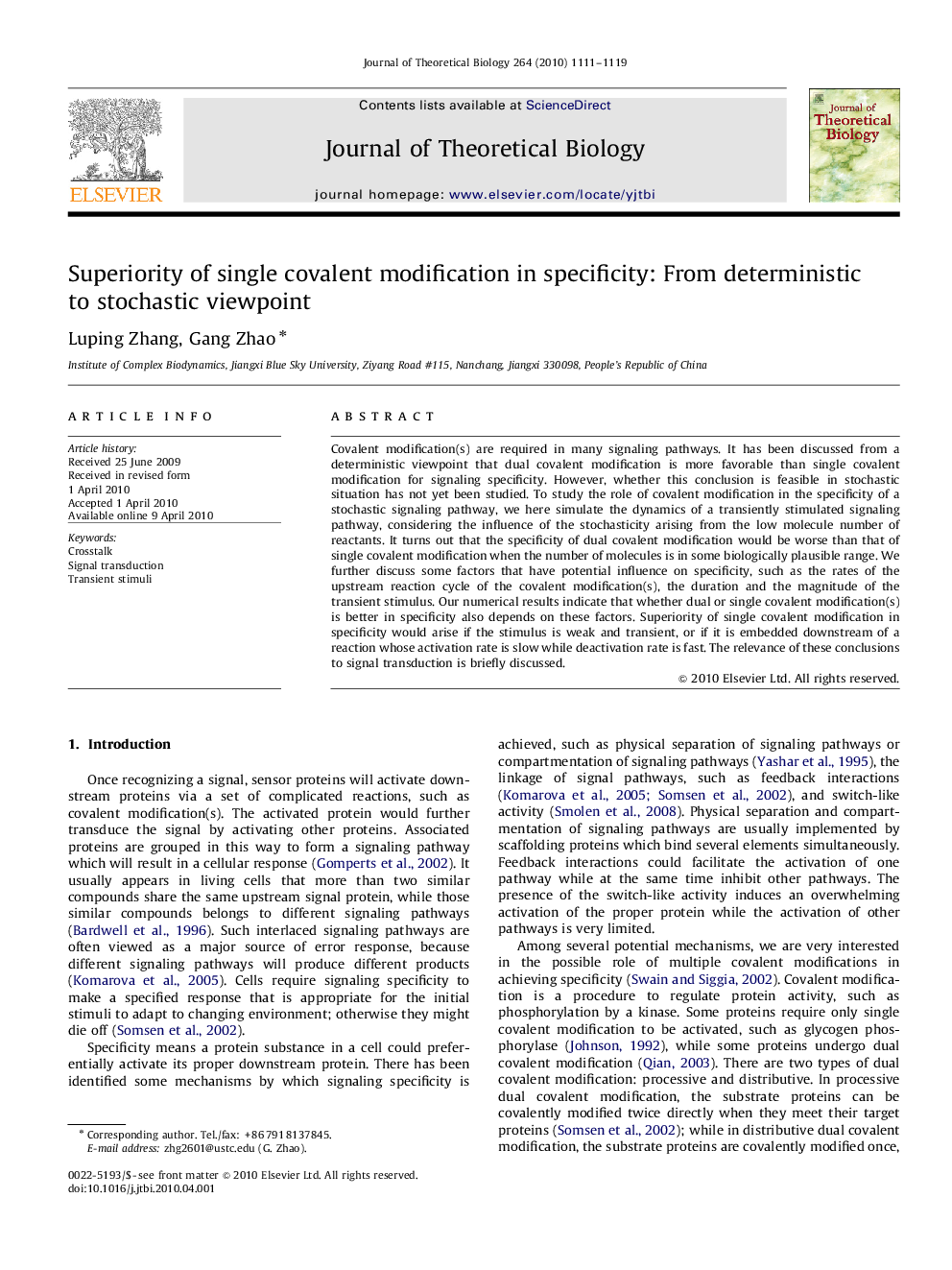| کد مقاله | کد نشریه | سال انتشار | مقاله انگلیسی | نسخه تمام متن |
|---|---|---|---|---|
| 4497552 | 1318940 | 2010 | 9 صفحه PDF | دانلود رایگان |

Covalent modification(s) are required in many signaling pathways. It has been discussed from a deterministic viewpoint that dual covalent modification is more favorable than single covalent modification for signaling specificity. However, whether this conclusion is feasible in stochastic situation has not yet been studied. To study the role of covalent modification in the specificity of a stochastic signaling pathway, we here simulate the dynamics of a transiently stimulated signaling pathway, considering the influence of the stochasticity arising from the low molecule number of reactants. It turns out that the specificity of dual covalent modification would be worse than that of single covalent modification when the number of molecules is in some biologically plausible range. We further discuss some factors that have potential influence on specificity, such as the rates of the upstream reaction cycle of the covalent modification(s), the duration and the magnitude of the transient stimulus. Our numerical results indicate that whether dual or single covalent modification(s) is better in specificity also depends on these factors. Superiority of single covalent modification in specificity would arise if the stimulus is weak and transient, or if it is embedded downstream of a reaction whose activation rate is slow while deactivation rate is fast. The relevance of these conclusions to signal transduction is briefly discussed.
Journal: Journal of Theoretical Biology - Volume 264, Issue 4, 21 June 2010, Pages 1111–1119